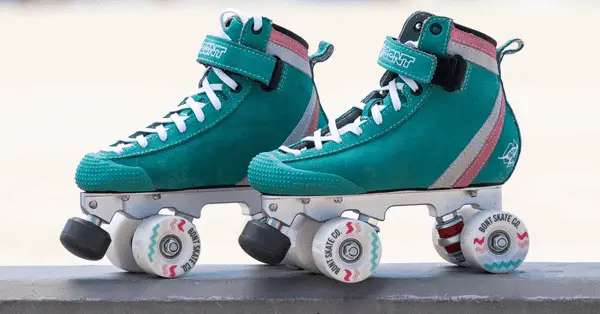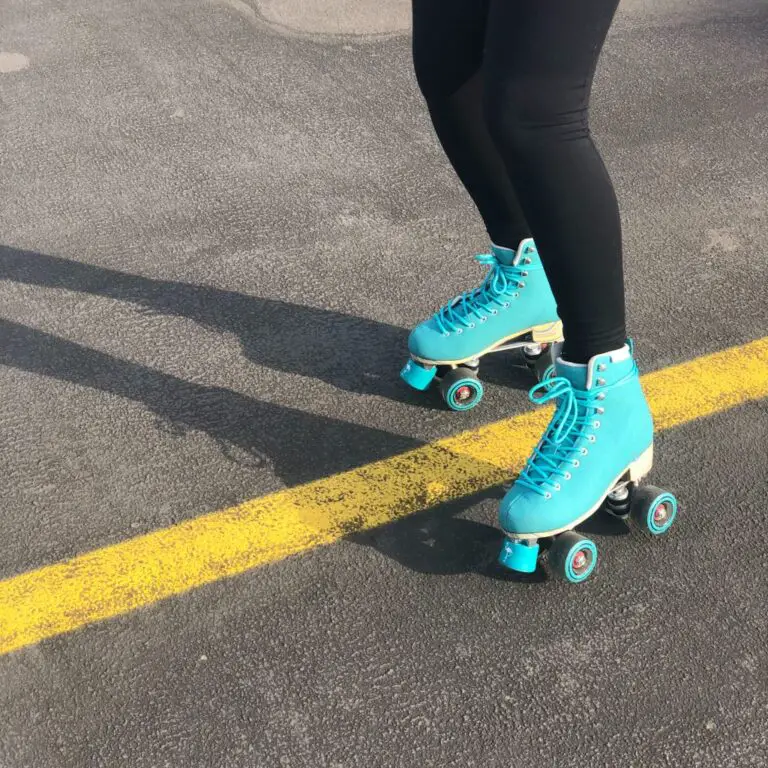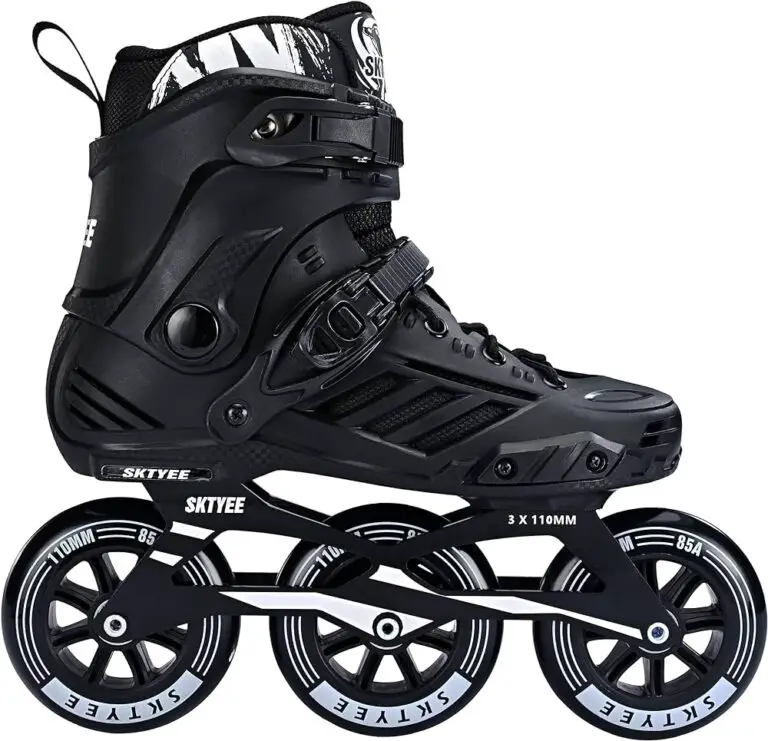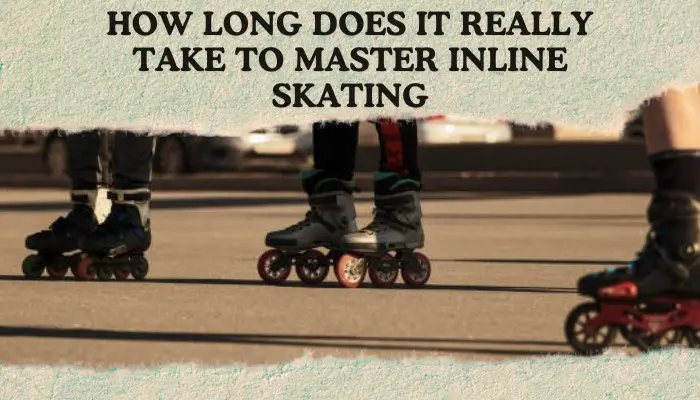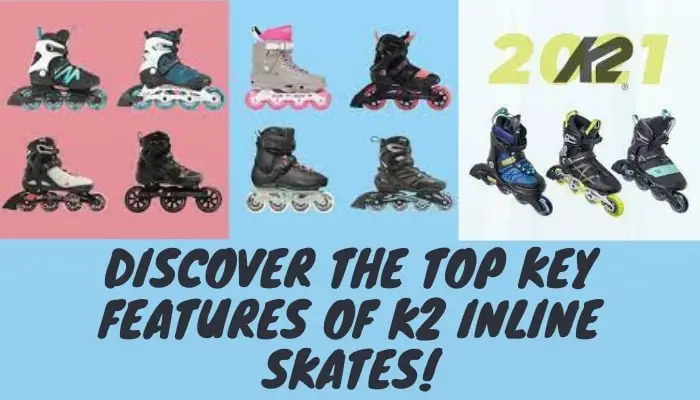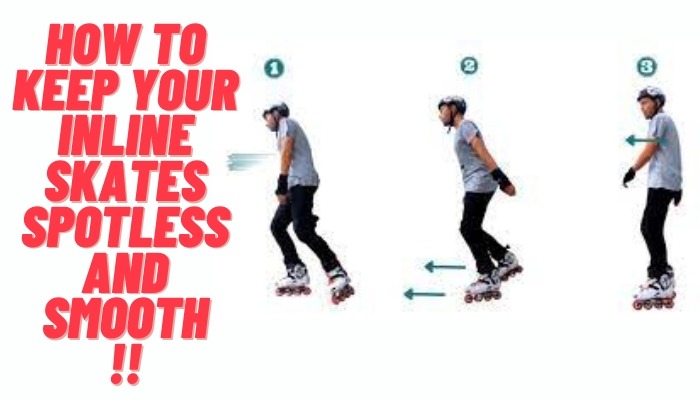What are the Different Types of Inline Skates? Discover Your Perfect Fit!
( If you purchase through our sponsored links, we may receive a small commission at no extra cost to you )
Inline skates come in four main types: recreational, fitness, aggressive, and speed. Each type is designed for specific purposes and offers unique features to enhance the skater’s experience.
Recreational inline skates are versatile and suitable for beginners and casual skaters. Fitness inline skates are built for endurance and performance, ideal for cardio workouts. Aggressive inline skates are specially designed for tricks and skate parks, with reinforced frames and smaller wheels.
Speed skates are built for high-speed skating and racing, featuring low-cut boots and larger wheels. Whether you’re a beginner or an experienced skater, finding the right type of inline skates can enhance your skating experience and help you achieve your goals.
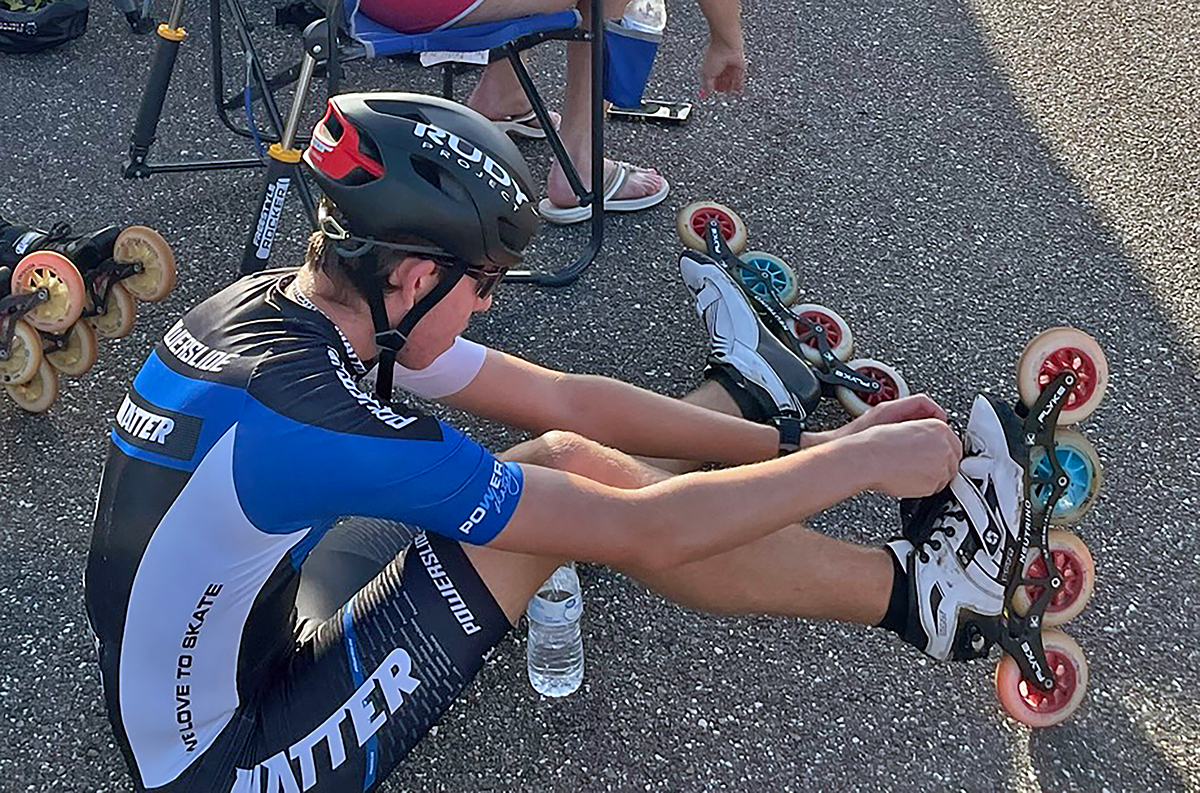
Credit: www.inlinespeedskater.com
1. Types Of Inline Skates
Inline skating is a thrilling and popular activity that offers a fun way to stay fit and explore the outdoors. However, with different types of inline skates available, finding the right pair can be overwhelming. In this article, we will explore the various types of inline skates, including recreational skates, fitness skates, aggressive skates, and speed skates, to help you understand their unique characteristics and choose the perfect pair for your skating adventures.
1.1 Recreational Skates
Recreational skates, also known as fitness skates, are the most commonly used and versatile type of inline skates. These skates are designed for leisurely skating and are ideal for beginners and casual skaters. Recreational skates typically feature a comfortable soft boot with ample padding and ankle support, allowing for longer skating sessions without discomfort.
These skates also usually have smaller wheels, ranging from 72mm to 80mm in diameter, providing a stable and smooth ride on various surfaces, such as pavement or smooth trails. The frame of recreational skates is typically made of lightweight materials like aluminum or composite, enabling easy maneuverability while ensuring durability.
Whether you want to skate in your local park, explore scenic paths, or just have fun with friends, recreational skates are a fantastic choice that offers comfort, stability, and versatility.
1.2 Fitness Skates
Fitness skates are similar to recreational skates but are designed with advanced features and performance in mind. These skates are perfect for those who want to take their skating to the next level, whether it’s improving their fitness, participating in group skates, or challenging themselves with longer and faster rides.
Fitness skates often feature a stiffer boot with increased ankle support, providing better control and stability during more intense skating sessions. The frame of fitness skates is usually made of lightweight and high-quality materials to enhance performance and reduce vibrations, resulting in a smoother and more efficient ride.
The wheels of fitness skates are slightly larger, ranging from 80mm to 90mm in diameter, offering increased speed without compromising maneuverability. With their superior performance and durability, fitness skates are the go-to choice for intermediate to advanced skaters looking to elevate their skating experience.
1.3 Aggressive Skates
For those seeking an adrenaline rush and the thrill of extreme skating, aggressive skates are the way to go. These specialized skates are designed for aggressive inline skating, which involves performing tricks, grinds, and jumps on various obstacles like ramps, rails, and ledges.
Aggressive skates feature a robust and highly durable boot with extra padding to protect against impacts and provide optimal ankle support. The frame of aggressive skates is typically designed to withstand the demands of jumps and grinding. It is often made of a combination of plastic and metal, offering exceptional toughness and stability.
The wheels of aggressive skates are smaller in size, typically ranging from 55mm to 60mm in diameter. These smaller wheels provide greater maneuverability and responsiveness, enabling skaters to navigate obstacles with precision and control.
If you’re an adrenaline junkie and thrive in the realm of daring tricks and stunts, aggressive skates will satisfy your quest for excitement and push your skating skills to the limit.
1.4 Speed Skates
Speed skates, as the name suggests, are designed explicitly for speed. These skates are popular among competitive skaters, marathon racers, or individuals looking to reach impressive speeds during their skating sessions.
Speed skates feature a low-cut, aerodynamic boot that minimizes wind resistance, allowing skaters to maximize their speed potential. The boot is often made of lightweight materials like carbon fiber or fiberglass, providing excellent support and power transfer to enhance performance. These skates also have a lower ankle height, providing skaters with a wider range of motion and better stride efficiency.
The wheels of speed skates are significantly larger, with diameters varying between 90mm to 125mm. These larger wheels, combined with high-precision bearings, minimize rolling resistance and ensure a smooth glide. The frame of speed skates is usually longer than other types, providing greater stability at higher speeds.
Whether you’re a competitive racer or simply enjoy the exhilarating feeling of gliding swiftly, speed skates will deliver the speed, control, and performance you desire.

Credit: www.amazon.com
2. Choosing The Right Inline Skate
Inline skates come in various types, including recreational, fitness, and aggressive skates. Each type is designed for different purposes, whether it’s leisurely skating, exercise, or performing tricks. It’s important to choose the right inline skate based on your intended use to ensure a safe and enjoyable experience.
Now that you have a better understanding of the different types of inline skates available, it’s time to focus on choosing the right one for your specific needs. Here are some important factors to consider when making your decision.2.1 Consider Your Skill Level
Before purchasing inline skates, it’s crucial to assess your skill level to ensure you select a pair that matches your abilities. Whether you’re a beginner or an expert, having the appropriate skates can greatly impact your experience and safety on the skating rink or outdoors.- Beginners: If you are new to inline skating, it’s advisable to opt for recreational or fitness skates that offer stability, support, and maneuverability. These skates typically have larger wheels and a wider wheelbase to enhance balance and control.
- Intermediate: For those who have mastered the basics and are looking to take their skating to the next level, a pair of cross-training or urban skates can be a good fit. These skates provide a blend of speed and maneuverability, making them ideal for navigating various terrains and practicing tricks.
- Advanced/Expert: If you have advanced skills or are into aggressive inline skating or speed skating, specialized skates tailored to these disciplines will be the best option. Aggressive skates are designed with smaller wheels, a sturdier frame, and grind plates for executing jumps and tricks. Speed skates, on the other hand, are built for maximum velocity with larger wheels and a low-cut boot style.
2.2 Identify Your Intended Use
Determining the purpose for which you will be using your inline skates is another essential aspect of choosing the right pair. Different types of skates are designed to cater to specific activities, so it’s important to align your intended use with the correct skate type.- Recreational Skates: Ideal for casual skating, these skates are perfect for leisurely rides in the park or along scenic paths. They provide comfort, stability, and easy maneuvering, making them suitable for beginners and individuals looking to enjoy a relaxing skate.
- Fitness Skates: Designed for exercise and cardio workouts, fitness skates offer a balance of speed and maneuverability. They feature larger wheels for smoother rides and typically have a longer frame to promote optimal stride efficiency.
- Urban Skates: If you’re planning to use your skates for transportation or city commuting, urban skates are the way to go. They are specifically engineered for navigating urban environments, with features such as larger wheels, durable construction, and enhanced shock absorption.
- Aggressive Skates: For the thrill-seekers and trick enthusiasts, aggressive skates are specially made to withstand the demands of jumps, grinds, and other high-impact stunts. With a focus on durability and responsiveness, these skates are popular among skaters who frequent skate parks and urban areas with skate-friendly obstacles.
- Speed Skates: If your goal is to achieve high speeds and participate in races, speed skates are your best bet. These skates are built for maximum efficiency and are equipped with larger, high-performance wheels and a lightweight design to optimize velocity.
2.3 Determine The Fit And Comfort
Lastly, nothing is more important than ensuring a proper fit and optimal comfort when selecting your inline skates. Ill-fitting skates can lead to discomfort, pressure points, and even injuries, so it’s crucial to get the size and fit right. To determine the right size, measure your foot length and refer to the manufacturer’s size chart. Keep in mind that sizes may vary across different brands, so it’s best to measure each time you purchase new skates. Additionally, consider the width and shape of the boot to ensure it accommodates the unique contours of your feet. A proper fit should provide adequate ankle support while allowing for a comfortable range of motion. Ensure that the skates feel snug but not overly tight, with enough room to wiggle your toes. It’s also important to check if the closure system, such as laces, straps, or buckles, allows for proper adjustment and secure fastening. By carefully considering your skill level, intended use, and fit and comfort requirements, you’ll be well-equipped to choose the right inline skate that will elevate your skating experience and meet your specific goals. Remember, investing time in selecting the right pair of skates can enhance both your performance and enjoyment on wheels.3. Maintaining And Caring For Inline Skates
Inline skates require regular maintenance and care to ensure optimal performance. It is important to understand the different types of inline skates available in order to properly maintain them.
Inline skates are a thrilling way to enjoy the outdoors, but like any sports equipment, they require regular maintenance and care to ensure optimal performance and longevity. By properly cleaning, replacing parts, and storing your inline skates, you can extend their lifespan and make the most out of your skating adventures. In this section, we’ll delve into the essential aspects of maintaining and caring for inline skates. Let’s get started!3.1 Cleaning And Maintenance
To keep your inline skates in top shape, regular cleaning and maintenance are crucial. Here are some key steps to follow:Regular Cleaning Routine
– After each skate session, remove any loose debris from the skates using a soft cloth or brush. – Use a damp cloth and mild soap to wipe down the skate boots, frames, and wheels. Avoid submerging the skates in water to prevent damage to the bearings. – Dry the skates thoroughly with a clean cloth to prevent rust and wear. – Inspect the boots, frames, and wheels for any signs of damage or excessive wear. If you notice any issues, address them promptly.Bearing Maintenance
– Inline skate bearings require periodic cleaning and lubrication. Refer to the manufacturer’s instructions for specific guidance on cleaning and lubricating your bearings. – Regularly inspect the bearings for dirt or debris. If necessary, remove the shields or seals and clean the bearings using a specialized bearing cleaner or isopropyl alcohol. – Apply a few drops of lubricant to each bearing and spin the wheels to distribute the lubricant evenly. Be cautious not to over-lubricate.3.2 Replacing Parts
Over time, certain parts of your inline skates may wear out or become damaged. Knowing when and how to replace these parts is essential for maintaining your skates’ performance and safety. Here are some common parts that may require replacement:Wheels
– Inline skate wheels wear down with use, affecting your skating experience. Replace the wheels when they become significantly worn or flat-spotted. – When replacing the wheels, ensure they are compatible with your skate model and intended usage. Different wheel hardness and sizes are suitable for various skating styles and terrains.Bearings
– If your inline skate bearings become noisy or don’t spin smoothly, it’s time for a replacement. Worn-out bearings can hinder your performance and increase the risk of accidents. – When purchasing new bearings, consider quality brands that offer durability and precision. Higher-grade bearings can enhance your skating experience.Other Parts
– Check the integrity of your brake, straps, buckles, and laces regularly. Replace any damaged or worn-out components to maintain proper functionality and safety.3.3 Proper Storage
Properly storing your inline skates when not in use is crucial to prevent damage and maintain their performance. Here are some tips to keep in mind:Clean and Dry
– Before storing your skates, ensure they are clean and thoroughly dry to prevent the growth of mold or mildew.Protective Gear
– Remove any protective gear like knee pads, elbow pads, or wrist guards from the skates before storage. Clean and store them separately.Safe Location
– Find a cool, dry, and well-ventilated area to store your skates. Avoid areas prone to extreme temperature changes, high humidity, or direct sunlight.Avoid Weight Pressure
– Do not stack heavy items on top of your skates during storage, as it can cause damage or deformation. Remember, proper maintenance, regular cleaning, and timely replacement of parts can significantly prolong the lifespan of your inline skates. By incorporating these practices into your skating routine and storage habits, you can continue enjoying the exhilaration of inline skating for years to come!
Credit: bont.com
Frequently Asked Questions For What Are The Different Types Of Inline Skates?
How Many Types Of Inline Skates Are There?
There are two main types of inline skates: recreational skates and aggressive skates. Recreational skates are designed for casual use and are typically used for fitness and leisure skating. Aggressive skates are built for stunts, tricks, and intense skating on ramps and rails.
How Do I Choose Inline Skates?
To choose inline skates, consider your skill level, skating style, and foot size. Determine if you need recreational, fitness, or aggressive skates. Check the skate’s frame, wheel size, and hardness. Try different brands and models to find the best fit and comfort.
Can You Use Aggressive Skates On The Street?
Yes, aggressive skates can be used on the street. They are designed for tricks and stunts, making them suitable for urban environments.
What Is The Difference Between Men’s And Women’s Inline Skates?
The difference between men’s and women’s inline skates lies in their design, fit, and style. Men’s skates are typically wider and have a larger sizing range, while women’s skates are narrower and have a narrower sizing range. They also come in different colors and patterns to suit individual preferences.
Conclusion
Understanding the different types of inline skates is crucial for making an informed decision about which one suits your needs. Recreational skates offer comfort and stability for casual skating, while fitness skates are designed for speed and endurance. For those who seek thrills, aggressive skates provide the durability and maneuverability necessary for tricks and stunts.
Finally, speed skates are specifically engineered for racing and offer maximum speed. By considering your skating goals and preferences, you can choose the perfect pair of inline skates to enhance your experience on wheels.

